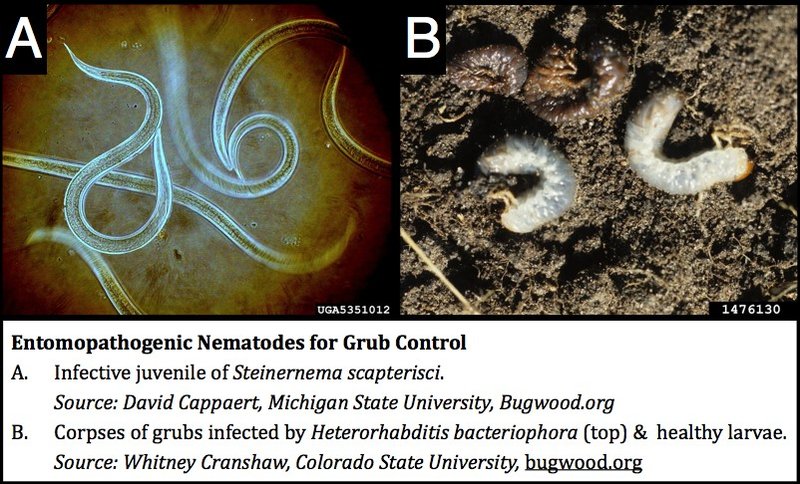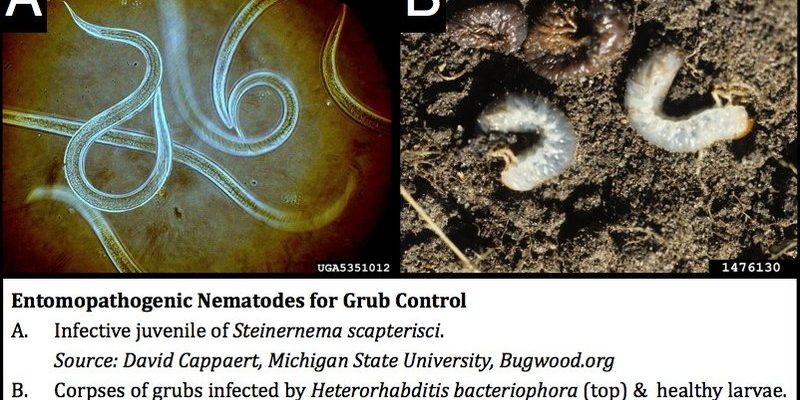
Nematodes are microscopic, worm-like creatures that naturally hunt down pests like grub worms. Think of them as tiny soldiers equipped with a mission—to help your garden thrive by attacking the bad guys! As we dive deeper into this topic, you’ll discover how these little organisms work, how to use them effectively, and why they might just be the solution you’ve been looking for.
What Are Nematodes?
Nematodes are fascinating little creatures that belong to a large family of roundworms. They live in various environments, from soil to water, and while most are harmless, some are predators. When it comes to pest control, we’re particularly interested in **entomopathogenic nematodes**. These are the superheroes of the nematode world, as they target and kill insects like grub worms.
These microscopic worms can go unnoticed to the naked eye, measuring just 0.5 to 1 millimeter long. They have a simple life cycle: they hatch from eggs, find a host (like our troublesome grubs), and enter their bodies to reproduce. Inside, they release bacteria that help break down the host’s tissues, leading to the grub’s eventual demise. It’s a natural way of balancing ecosystems, and it’s particularly effective for gardeners who dislike using toxic chemicals.
You might be wondering why choose nematodes over traditional pesticides. For starters, they are safe for pets, humans, and beneficial insects, which is a significant plus. They also target specific pests, meaning they won’t harm other garden inhabitants, making them an eco-friendly option for your pest control toolbox.
How Nematodes Work Against Grub Worms
Let’s break down the process of how these tiny warriors tackle grub worms. First, nematodes need to be introduced into the soil where grub worms reside. When the nematodes are applied, they begin seeking out potential hosts. They use their sensory skills to navigate and find grubs underground and will enter their bodies through natural openings, like the mouth or breathing pores.
Once inside, the nematodes release symbiotic bacteria, which quickly multiply and start breaking down the grub’s tissues—a bit like a tiny biological army invading and taking over the enemy base. This process not only kills the grub but also benefits the nematodes, allowing them to reproduce and continue their quest for more pests. It’s a cycle of life that keeps working as long as conditions are right—warm soil and adequate moisture.
Here’s the thing: you won’t see immediate results right away. It may take several days for the nematodes to do their job, but once they get going, they can significantly reduce the grub population. This patience is crucial, as rushing into harsh chemicals could harm the beneficial insects and the environment in the long run.
Choosing the Right Nematodes for Grub Control
Not all nematodes are created equal. When selecting nematodes for grub control, you want to look for species that specifically target grubs. **Heterorhabditis bacteriophora** and **Steinernema carpocapsae** are two popular choices for this purpose. These nematodes thrive in warm environments and actively search for their grub victims.
When purchasing nematodes, it’s essential to choose a reputable supplier. Many garden centers or online retailers offer packaged nematodes, often in a dormant state. The packaging will typically specify which pests they target, so look for options specifically labeled for grub control. Always check the expiration date, as they can lose effectiveness over time.
You’ll also want to consider **how to store them** until you’re ready to use them. Most nematodes should be kept cool and moist but never frozen. Following the supplier’s instructions will ensure they stay lively and ready for action when you need them.
How to Apply Nematodes for Effective Pest Control
Applying nematodes is relatively straightforward, but there are a few key steps to follow to ensure they work well against grub worms. First, you’ll want to prepare your lawn. A few days before application, water your lawn to keep the soil moist. Nematodes prefer damp conditions, so this is crucial.
When you’re ready to apply them, you can mix the nematodes with water in a sprayer or watering can. This helps distribute them evenly across your yard. While doing this, target areas where you’ve noticed grub activity or brown patches. What’s great is these little guys can travel through the soil, so you don’t need to be overly precise in placing them.
After applying, give your lawn another good watering. This not only helps the nematodes settle into the soil but also encourages them to move and seek out grub worms. Avoid letting the soil dry out for a few weeks afterward to keep those little soldiers active and effective.
When to Use Nematodes for Grub Control
Timing is essential when it comes to using nematodes for grub control. Ideally, you want to apply them when the grub worms are in their larvae stage. This usually occurs during late spring and early summer when temperatures rise. However, depending on your location, it might be worth checking with local gardening resources to find out the best timing for your area.
You might also consider applying nematodes in the fall, as they can help manage populations before they overwinter in the soil. This proactive approach can lead to fewer grubs in the spring, reducing the damage to your lawn throughout the warmer months.
If you’re unsure whether you have a grub problem, you can check your lawn by digging up a small patch of grass. Look for larvae in the soil. If you spot a few, it might be time to introduce nematodes. But remember, a healthy lawn can tolerate a few grubs without issue—so it’s all about finding a balance.
Benefits of Using Nematodes for Lawn Health
Using nematodes for grub control not only helps tackle those pesky pests but also promotes overall lawn health. By opting for this biological control method, you’re choosing a way that complements natural ecosystems. This can lead to a healthier, more resilient lawn, less susceptible to future pest problems.
Another benefit? Nematodes enrich the soil microbiome. As they work through the soil, they help break down organic matter, which can contribute to improved soil structure and fertility. This means your grass will have better access to nutrients and water, leading to a lusher green lawn.
Honestly, switching to biological controls like nematodes can save you money in the long run. Although the initial investment in nematodes might seem a bit high, they can reduce your need for repeated chemical applications. Plus, happy, healthy lawns can mean fewer pests overall!
Common Misconceptions About Nematodes
Even though nematodes are growing in popularity, several misconceptions keep people from trying them. One common myth is that nematodes won’t work if you can’t see them. Let me explain: just because they’re microscopic doesn’t mean they’re ineffective! They’re busy doing their job beneath the surface, so patience is key.
Another misconception is that using nematodes is complex. In reality, applying them is quite straightforward. With a little preparation and care, you’re set to unleash these tiny warriors in your garden.
Some people may also worry that nematodes could harm beneficial insects. The good news is that they’re quite specific in their targeting. Most nematodes used for grub control won’t attack beneficial insects, making them a safe choice for your ecosystem.
In summary, using biological controls like nematodes provides a safe, environmentally responsible way to manage grub worms. They’ll not only help your lawn bounce back from these pesky invaders but also contribute positively to your garden’s ecosystem.
As you explore the world of gardening, consider giving nematodes a try. They’re often underrated but can do wonders for your plants while keeping your yard healthy and happy! So, with a little patience and the right approach, you might just have the lush green space you’ve always dreamed of.

